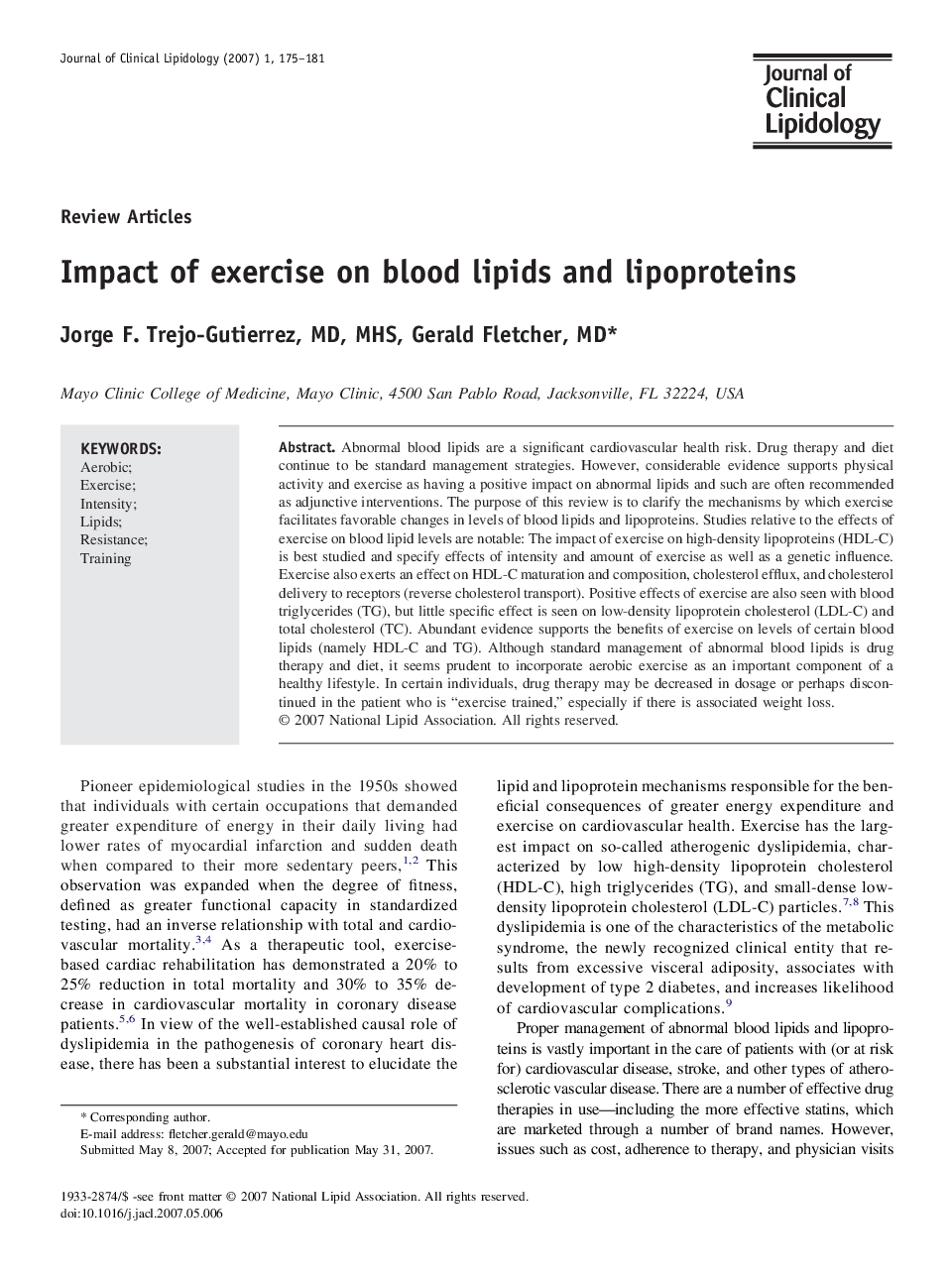| کد مقاله | کد نشریه | سال انتشار | مقاله انگلیسی | نسخه تمام متن |
|---|---|---|---|---|
| 2967260 | 1178835 | 2007 | 7 صفحه PDF | دانلود رایگان |

Abnormal blood lipids are a significant cardiovascular health risk. Drug therapy and diet continue to be standard management strategies. However, considerable evidence supports physical activity and exercise as having a positive impact on abnormal lipids and such are often recommended as adjunctive interventions. The purpose of this review is to clarify the mechanisms by which exercise facilitates favorable changes in levels of blood lipids and lipoproteins. Studies relative to the effects of exercise on blood lipid levels are notable: The impact of exercise on high-density lipoproteins (HDL-C) is best studied and specify effects of intensity and amount of exercise as well as a genetic influence. Exercise also exerts an effect on HDL-C maturation and composition, cholesterol efflux, and cholesterol delivery to receptors (reverse cholesterol transport). Positive effects of exercise are also seen with blood triglycerides (TG), but little specific effect is seen on low-density lipoprotein cholesterol (LDL-C) and total cholesterol (TC). Abundant evidence supports the benefits of exercise on levels of certain blood lipids (namely HDL-C and TG). Although standard management of abnormal blood lipids is drug therapy and diet, it seems prudent to incorporate aerobic exercise as an important component of a healthy lifestyle. In certain individuals, drug therapy may be decreased in dosage or perhaps discontinued in the patient who is “exercise trained,” especially if there is associated weight loss.
Journal: Journal of Clinical Lipidology - Volume 1, Issue 3, July 2007, Pages 175–181